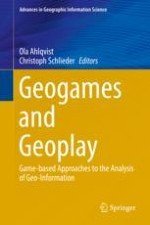2018 | OriginalPaper | Chapter
3. OriGami: A Mobile Geogame for Spatial Literacy
Authors : Thomas Bartoschek, Angela Schwering, Rui Li, Stefan Münzer, Vânia Carlos
Published in: Geogames and Geoplay
Publisher: Springer International Publishing
Activate our intelligent search to find suitable subject content or patents.
Select sections of text to find matching patents with Artificial Intelligence. powered by
Select sections of text to find additional relevant content using AI-assisted search. powered by
